
Mud Lake, May 10th
May 12th, 2010
As the early nesters bear, raise, and even fledge their young, other species are only just beginning. The next big wave of spring migration has hit.
Baltimore Orioles are back--three flame orange males at various locations around Mud Lake, all of them camera shy. American Redstarts are back and singing. Cedar Waxwings have returned from wherever they wandered to last winter (it's variable), and are now present in flocks throughout the BCA. Catbird songs emanate from every other bushy thicket. And Warbling Vireos and Yellow Warblers are singing their little hearts out.
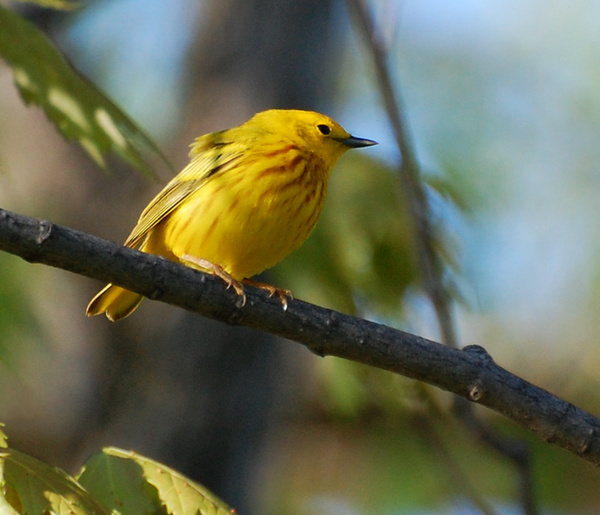
1680x1050 wallpaper
On Tuesday afternoon, insect swarms by the Ottawa River attracted an impressive mixed flock of literally hundreds of swallows and swifts, whizzing through the air at high speed as they snapped up whatever they could. I love swallow-watching, though I don't usually attempt it with a camera--they just move too fast. I guess I was a glutton for punishment that day, because I tried it anyhow. I was rewarded with a surprisingly well-focused shot of a Chimney Swift.
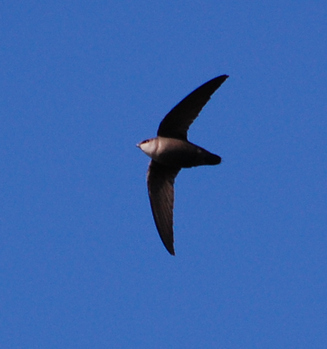
Swifts are the most aerial class of birds in the world--and Chimney Swifts are no exception. Unless they have young to tend, they spend literally the entire day in the air. They are incapable of perching. They're common birds, but unless you find a nest/roost site inside a chimney or hollow tree (where they cling to vertical surfaces), the only way you'll ever see them is in flight. Swifts remind me of bats--their strange nesting habits, their irregular, fluttery flight--but they're birds, most closely related to the hummingbird family.
Trivia point: authentic Bird's Nest Soup is made from the saliva of Cave Swiftlets. As if they weren't batlike enough, some cave swifts use echolocation to find their nests in the dark.
All three of Mud Lake's breeding herons (Great Blue, Green, Black-Crowned Night) are back on territory. Great Blues have been back for awhile, but this one on Tuesday was my first of the year.
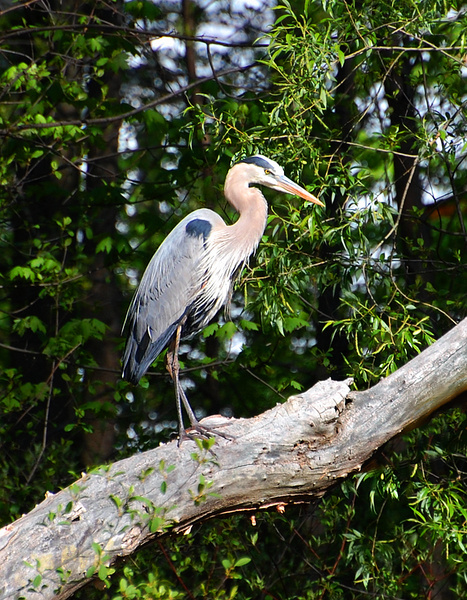
I've seen little variety of migrant warblers so far this year--haven't been out at the right times and places, I guess. That's fine, since tomorrow I'm off to Point Pelee, migrant warbler capital of the world!
A Time For New Life
May 11th, 2010
Yesterday at Mud Lake, something I'd never witnessed before: Red-Winged Blackbirds mating! In my years as a birder it's one of the most charming things I've ever seen.
( Cut for the bashful )
For others, there's already new life.

Specifically, two very yellow, very fluffy, and very newborn Canada Goose goslings. I don't know if they've even been in the water yet--that bit of wetness on his down may be from hatching. The parents are still very protective, hissing if I get too close. (Later on, they'll warm to humans again and even teach their young how to solicit handouts.)
Elsewhere around Mud Lake, patient mothers continue to brood. Once all the goslings are hatched, the parents will gather them together into a creche for communal protection.
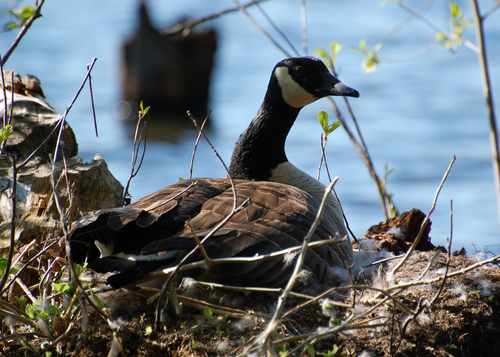
A very few are further along still. Ravens lay their eggs as early as February. The raven's nest at Mud Lake already has fledged young. The teenage ravens are flying around in the canopy near the nest, calling back and forth to each other and generally making an ungodly racket any time of day.


South-of-the-airport birds
May 5th, 2010
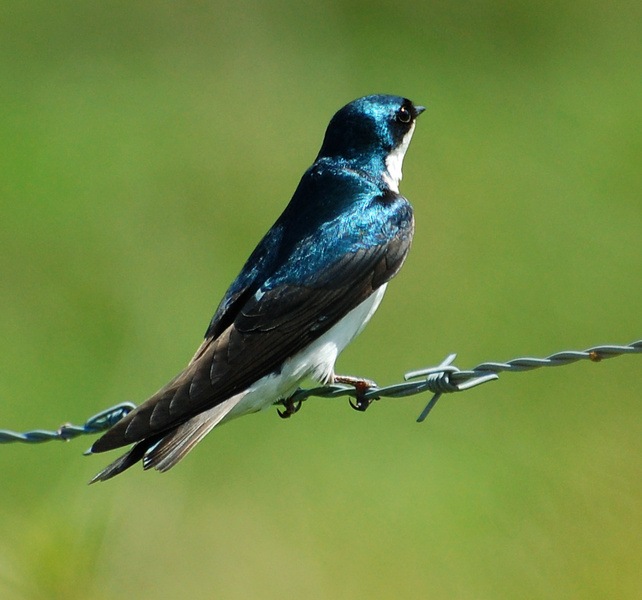
Tree Swallow, wallpaper available
I heard far more than I saw, south of the airport today--and saw far more than I photographed. The birds were active but elusive.
As were the butterflies. They're out in good numbers now--Spring Azures, migrant Red Admirals, plus, a new one for my unofficial "butterfly lifelist": a Black Swallowtail. None of them would stay still for a picture.
Though it was afternoon, not morning, there was lots of birdsong. Field, Vesper, Savannah, Song, Chipping and White-Throated Sparrows all going at it, plus a Warbling Vireo or two--a recent arrival in Ottawa as of the past week. A Brown Thrasher joined the chorus as evening moved in.
Emanating from a fenced-off field, I could hear the sweet, plaintive song of an Eastern Meadowlark. It was almost enough to tempt me past the fence--meadowlarks are as beautiful as their voices are sweet--but there are signs posted, and I don't know if they're "no trespassing unless you mean well" signs or "NO TRESPASSING" signs, so I didn't. I also saw and heard a Bobolink in his ecstatic flight display, which marks my first Ottawa sighting of that species, and glimpsed a Northern Harrier, both in the same fenced-off field.
The one species that was available for as many photographs as I cared to take was Tree Swallows. Oh my goodness, the Tree Swallows. Tree Swallows left, right and center. Tree Swallows in the air, in the fields, on the lines, and on the nest boxes. And they look like they have every intention of taking over as many of those boxes as they can.
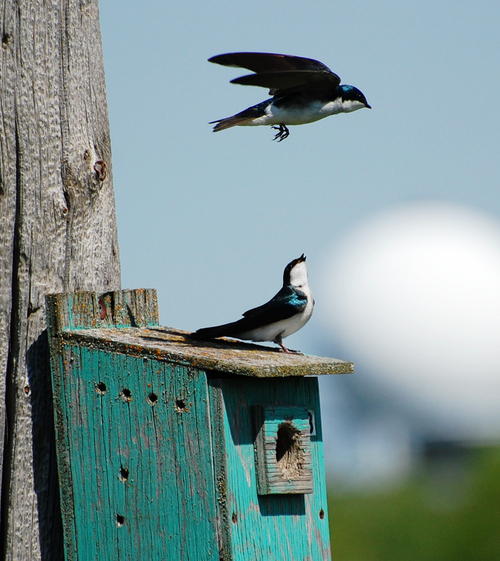
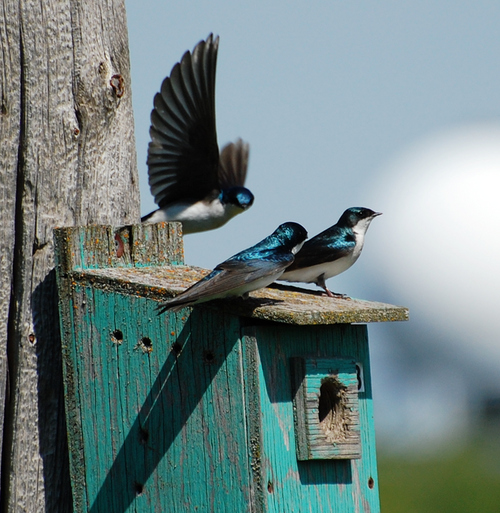
There was much squabbling. "My nest!" "No, my nest!" "Oh yeah?!" Um, guys? These boxes were intended for bluebirds. And while you are, technically, blue birds, I'm pretty sure that's not what was meant.
As for the actual bluebirds, they were around, although not nearly as numerous nor as noisy as the swallows, nor were they showing any interest in the nest boxes. Perhaps there are boxes elsewhere that they favor. Must do more exploring.
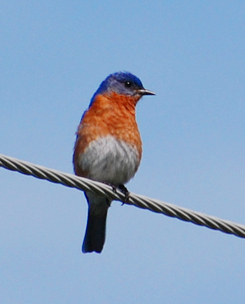
( More )
Where's Waldo?
April 29th, 2010
A treat at Mer Bleue this afternoon:

Actually, Waldo's not so hard to find in this picture. But when I first saw him, with naked eye, he looked only like a cattail that was a little darker, and leaning a little more to the right than the others. I twigged to it only because I'd been expecting it. I'd been listening to him call for the last half hour!
This is an American Bittern, a shy, stealthy and well-camouflaged marsh heron. American Bitterns are so shy that, if startled, they usually won't flush. Instead they'll stand erect with their bill straight up and sway in the breeze to imitate a cluster of reeds. Only my second sighting ever of this species and my first opportunity to photograph one, so it was pretty exciting.
Click on the link above to hear this bird's very unusual "water pump" mating call.

Recent Arrivals At Mud Lake
April 25th, 2010
To me, Northern Flickers are the most beautiful of all Ottawa woodpeckers, beating out even the magnificent Pileated and the rare Red-Headed. They're also one of our few migrant (rather than year-round) woodpeckers. They're quite skittish--it's not often I get a close-up like this one!
I only regret the bird's undertail is in shadow. It's actually a strikingly vivid yellow, as are the undersides of his wings.

( More )
Spring Springs
April 19th, 2010
A wonderful morning in the southern corridor today. (I think I'll call it by its old name, "The Uplands"--less of a mouthful.) Four "welcome back"s to returning spring migrants, and more interesting things besides. Its so nice to have buds opening now. I was getting tired of all my bokehs coming out blue or gray!

1680x1050 wallpaper
This Blue Jay was gathering nest material at the edge of the woods.
"Welcome back" number one is for Brown Thrashers. One of the first things I heard when I walked into the meadow was their familiar doubled-phrase song. There were at least two singing males on territory. This is the best and frequently only time to see Brown Thrashers--when they're not singing, they're usually skulking in the bushes unnoticed.

Number two, this bashful Savannah Sparrow.
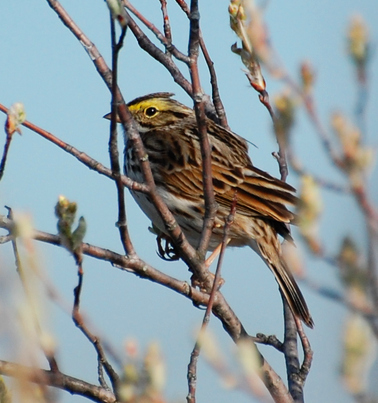
He didn't really want to be seen, but you can only hide so well when the leaves on the bush are just budding.
Numbers three and four have a story behind them.
At Gaspe, there was this bird song I heard. I heard it practically everywhere we went--anywhere with deep woods. I heard it in the mountains, on Bonaventure Island, at Forillon Park. It was a long, loud, ringing, exuberant song that seemed to echo through the treetops. It was a song that went on and on and on, three or even more trills connected by passages of chirpy up-and-down notes.
I tried and tried and never once managed to spot the bird. I went home and looked up bird songs left and right--any that seemed even remotely likely, Pine Grosbeak, both Crossbills, Fox Sparrow--nothing matched. Mostly, I looked up medium and large-size songbirds, not little ones. It never occurred to me that a little bird might make a sound like that.
Then I spent a weekend at a friend's cottage. And I heard the same song. And I went home and researched and still couldn't figure it out.
This morning, I heard that song again.
Well, you better believe I wasn't going to let that opportunity pass me by. For at least the next hour I searched for that bird. I bushwacked my way into the thick, wet woods across the train tracks, where the song was coming from--in the process, soaking my shoes right through to the skin. (Note to self: next time, wear hiking boots.) Whenever he stopped singing, I turned my attention elsewhere--for instance, to the pair of Hermit Thrushes, new arrival #3, who were in those same woods.
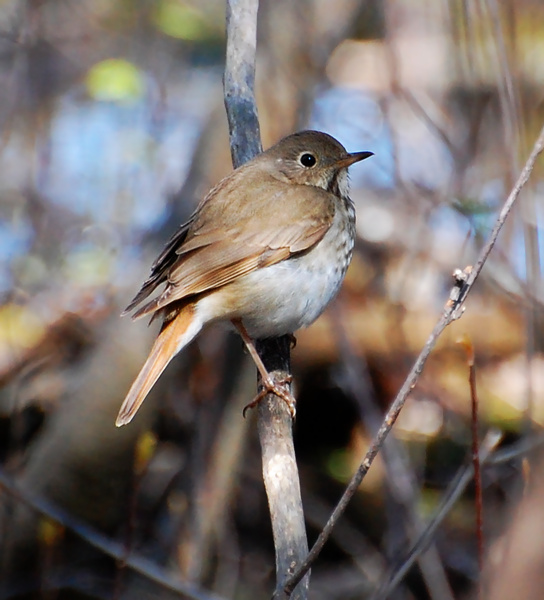
But I always had one dedicated ear listening for my mystery bird. Finally, I came to a spot in the woods and he sang and it was practically earsplitting, he was so close. I looked up. A tiny little bird came into view on top of a dead tree.
"Oh, no way," I thought. "Give me a break. The song merely led me to the little bird, the way it led me to those thrushes. It could not possibly be coming from the little bird."
The little bird was a Winter Wren. And yes, he WAS the producer of that song! I...had no idea. Most of the other wrens have reedy little gurgling songs and I just assumed Winter Wren followed suit.
Says AllAboutBirds: "Per unit weight, the Winter Wren delivers its song with 10 times more power than a crowing rooster."
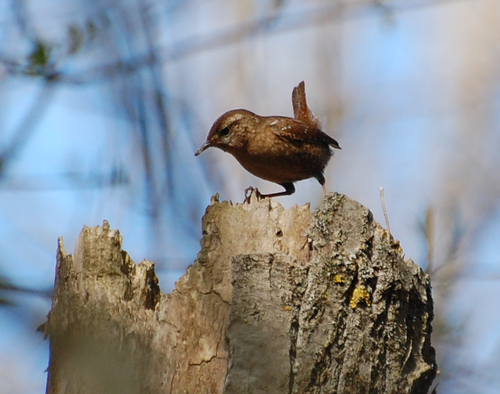
Isn't it wonderful that after years of this hobby, there can still be surprises?
On The Lookout
April 16th, 2010
This guy poked his head up while I was in the middle of photographing the raccoon. An embarrassment of riches :-)
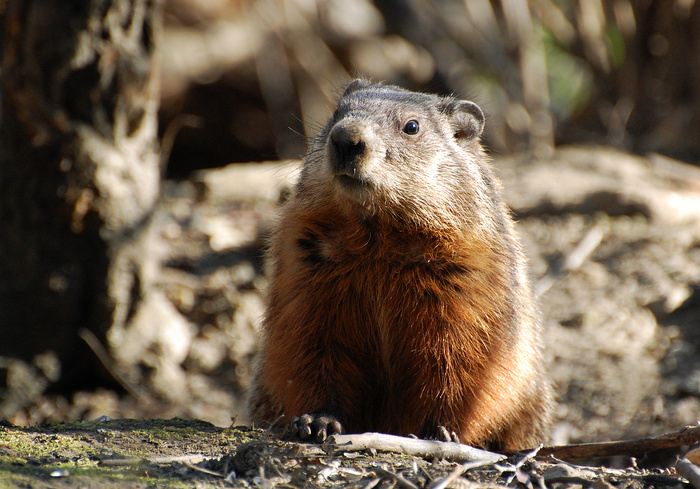
1680x1050 wallpaper
The Bandit
April 15th, 2010
Found this raccoon at Hog's Back Park a few days ago. He was pretty unconcerned about it--kept an eye on me, but otherwise went about his business.

1680x1050 wallpaper
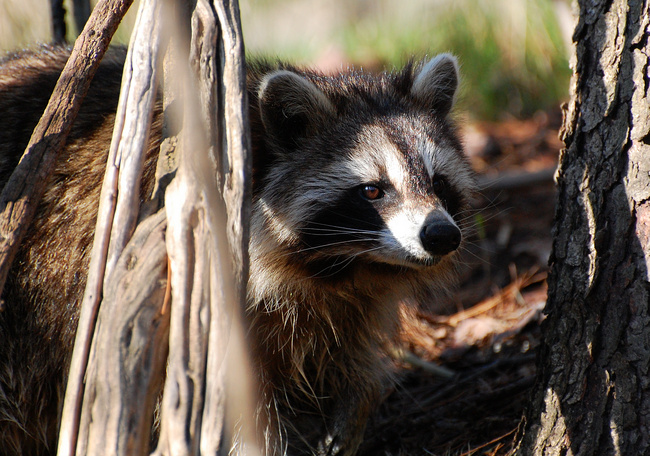
1680x1050 wallpaper
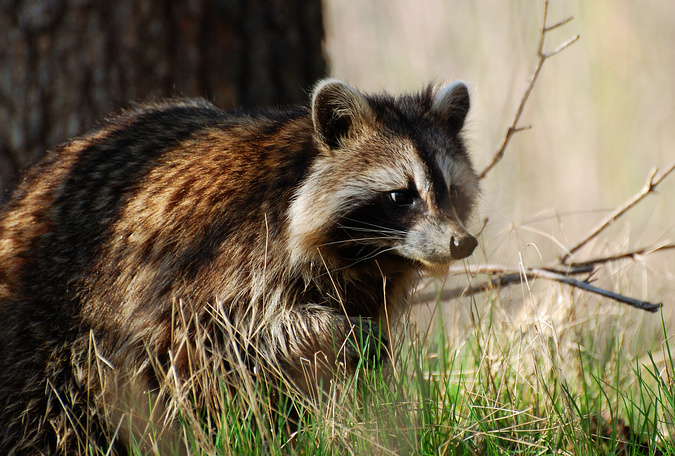
1680x1050 wallpaper.
Of cars, and snakes, and little brown birds
April 14th, 2010
Well, that was...terrifying.
And wonderful.
This afternoon I drove myself to the fields south of the airport. This is my first trip to the location and my first really serious foray into grassland birding. The area is famous. Depending where exactly you go, there's a huge variety of breeding sparrows (some quite rare), a variety of raptors, owls. There are ponds that attract waterfowl in fall migration, other places sporting farmland breeders like partridge and bobolinks (species you'd normally find only in much more outlying regions).
And, this area is one of the only remaining enclaves for Eastern Bluebirds in Ottawa. This is due partly to it being the grassland habitat that they favor, and partly to the abundance of manmade bluebird nest boxes--the work, according to one article I read, of a single couple, Brian and June Pye.
Where I come from, in Virginia, bluebirds are abundant suburban residents. You see them in front yards, on power lines, at feeders. Here, at the north edge of their range, they are rare and restricted, much more selective about habitat (as birds often are at the edge of their range). Before today I'd never seen an Ottawa bluebird. (Not to be confused with Ottawa blue jays, of which there are plenty. The bluebird is much smaller, with a rusty orange breast.)
I had been waiting for some more experienced birder, or some OFNC tour, to introduce me to this area. But when I studied it on Google Maps, I was excited to discover just how easy it is for me to get there myself. All I have to do is drive south on my very own Riverside Drive--Riverside turns into Limebank (maybe not officially, but it feels that way)--and then I'm practically there! It looked easy. It ended up being the most challenging, or at least the most intimidating, solo driving I've done yet.
( The story of how I got to Bowesville and Leitrim in one piece )
I saw my very first Ottawa bluebird before I was even out of the car. A female, perched on a power line. Thanks to my experience down south, I can identify this species at a glance. And I saw plenty more on my walk (most of them, also, perched on power lines), including the vivid lapis-blue males.
I'd been wanting to do more rural hiking and rural birding for awhile now. And though less than a half hour's drive from my home, this place was all the rural I could have hoped for. Beautiful wide-open uncultivated meadow, crisscrossed with dirt trails and narrow gravel roads. Stands of tall birches in the distance, some pines and spruces here and there, a few picturesque shade trees. A little pond I passed made me wish I'd brought my camera, though I know I couldn't have captured it. There was no composition to speak of. It was the colors. The deep deep blue water and the vivid green grass, and the way this little pond was nestled into the field. What can I say--I've lived my life in built-up areas, so when it comes to places like this, I'm easy to impress.
There were a few other people around. They were all dog-walkers. Of all the non-nature-lovers I could run into on a trail, I think I mind the dog-walkers the least, probably because I'm a dog-lover too. Mostly they were the big furry dogs that I favor--Berners and Huskies and Border Collies. They were all running off-leash and having a great time. The only other distraction was, of course, the planes. That too was a pleasant distraction. It wasn't near enough to the airport for there to be any undue noise, and it was neat to see them so close-up.
My next treat was an American Kestrel perched on a power line. My only other kestrel sighting (quite recently, as you'll recall) was brief and unsatisfying--this one could not have been better. Close-up, and all the light I needed to appreciate what a gorgeous bird he was. He was eating something, and when I got close enough I saw what looked like a red-bellied snake in his talons.
He finally took off, but didn't immediately fly away--he circled overhead, the snake still in his talons, giving me more incredible views of this elegant, colorful falcon. And slowly he circled away until he was out of sight.
At this point, I decided it had been worth the trouble to get here. But there was more to come. Two lifers more to come, in fact.
After awhile of exploring the meadow I came upon two sparrows in a bush. Field Sparrows to be precise. Lifer number one! I came prepared, and identified them quickly. They were one of the species I was expecting, and they were everything the field guides said, both looks and behavior. Tiny little mites with high-pitched peeping voices and rusty crowns, not particularly shy. Most reminiscent of the Chipping Sparrow (a common backyard bird), but without that species' strong facial pattern.
Around this time, a din was building in the distance. A sound like a hundred birds all chirping at once. I usually linger over a new species when I can, but the sound finally pulled me away. I followed it...and came back to that little deep-blue pond. It had been silent when I arrived; now, with afternoon moving into evening, a chorus of musical chirps arose from it. I'd never heard such a thing--I'd heard the occasional sweet-voiced frog but never so many of them at once. Spring Peepers, maybe?
After enjoying that for awhile, I headed back out. Four vultures soared slowly overhead. (Sorry, fellas. Not dead yet!) And after a little more exploring I found my final treat of the day: a lifer Vesper Sparrow. This one was less straightforward than the Field Sparrows, and I had to study it awhile to be sure. But in the end, I was sure.
I'm finally doing it. I'm finally closing the grassland gap in my lifelist. And it's happening pretty darned fast, now that I've set my mind to it!
I'll be back. Back to search for the ultra-shy, ultra-sneaky Grasshopper Sparrow, and for Short-Eared Owls, and many others. But perhaps next time I'll go there with someone more experienced in tow.
Openness
April 13th, 2010

1680x1050 wallpaper
An early-blooming daffodil at Hog's Back Park.
|
